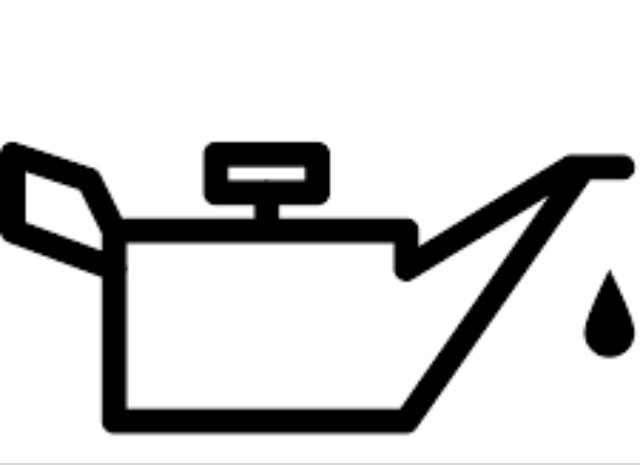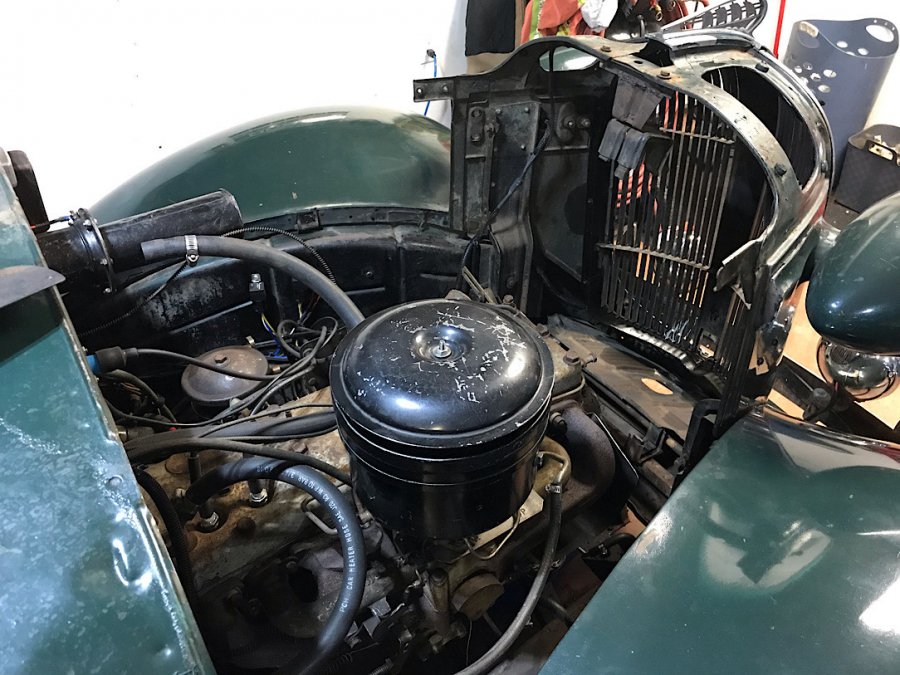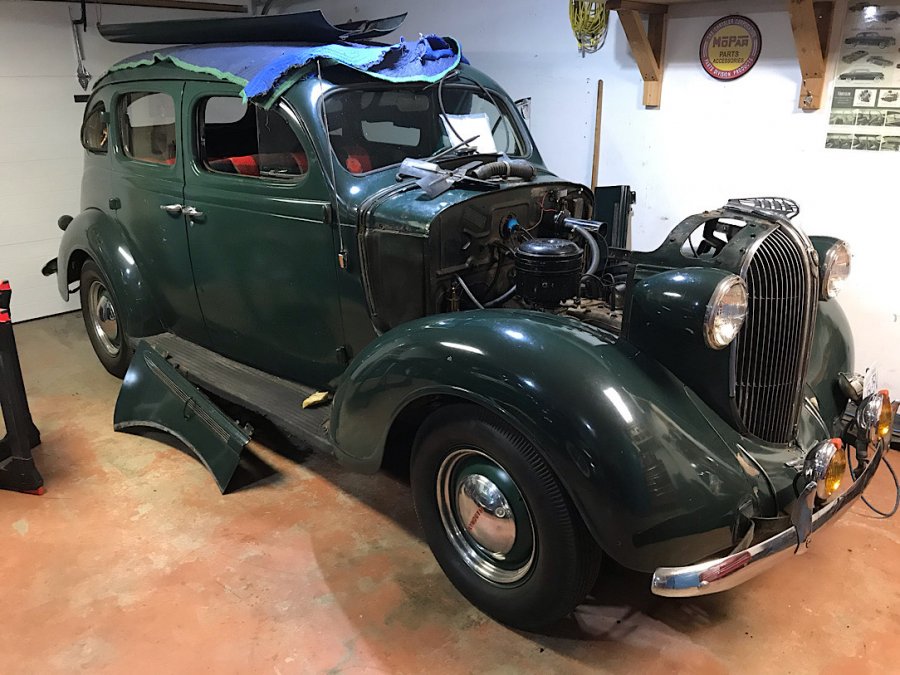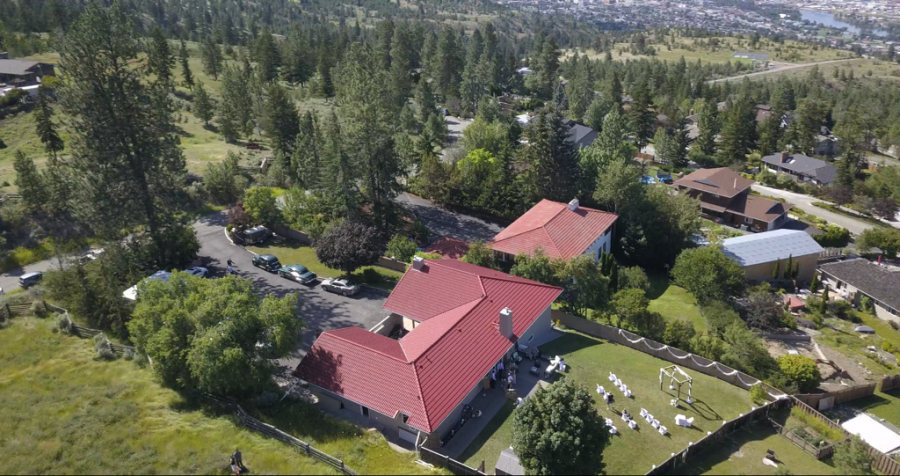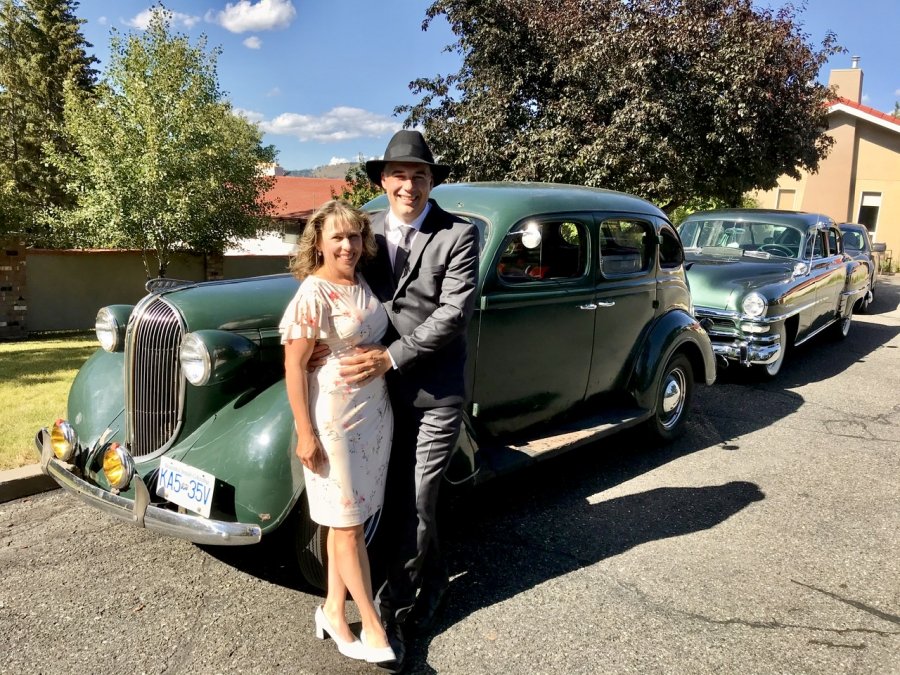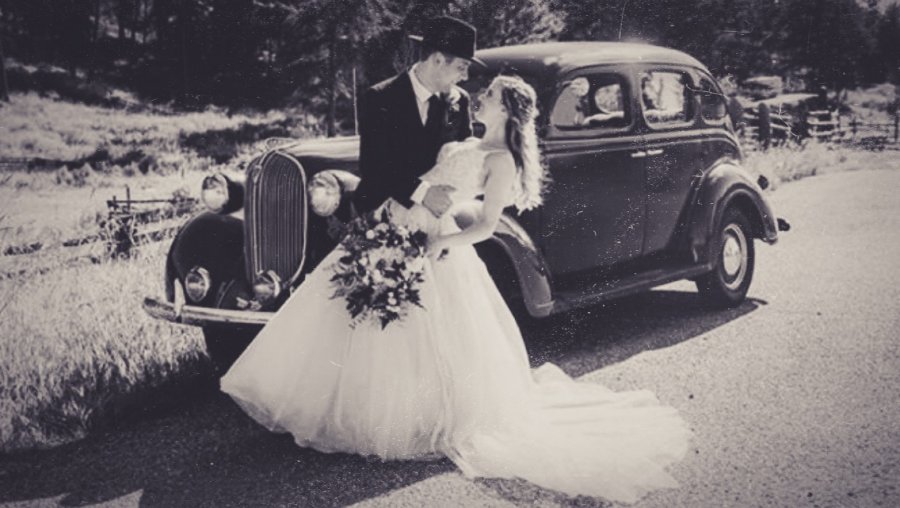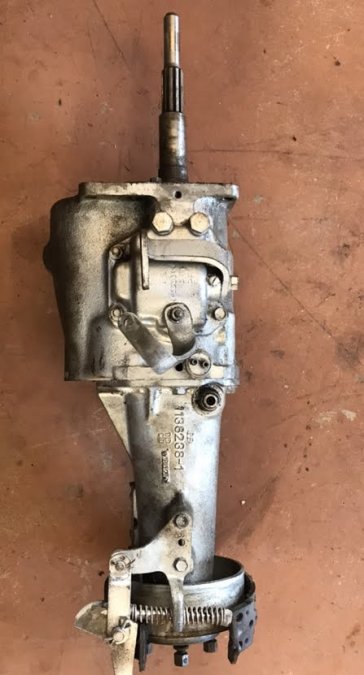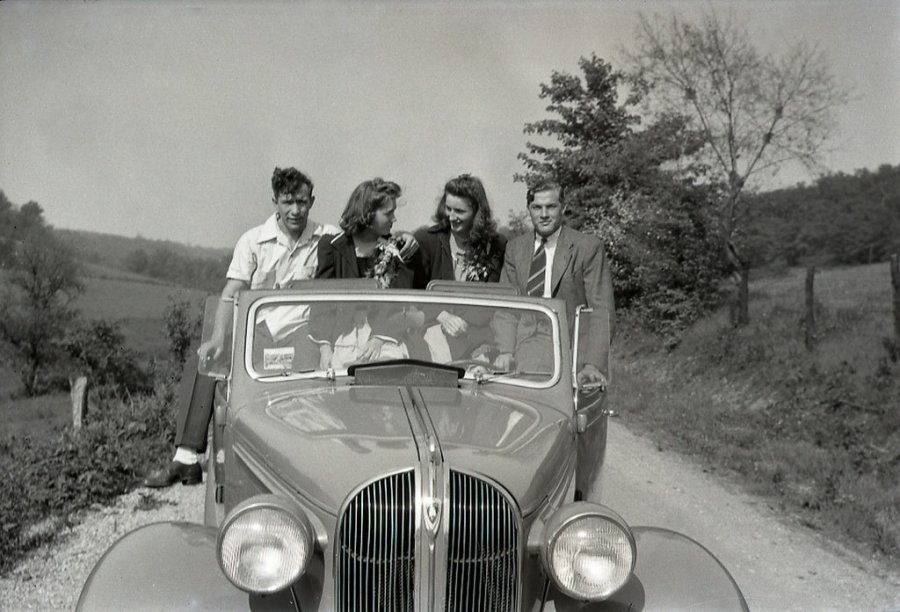-
Posts
3,462 -
Joined
-
Last visited
-
Days Won
193
Content Type
Links Directory
Profiles
Articles
Forums
Downloads
Store
Gallery
Blogs
Events
Everything posted by keithb7
-
The rad is out of my '38 getting rebuilt. While its out I figure I better get in there and replace the water pump. Well the distribution tube is behind there too. Better have a good look at it while I am in this far. So all this is out, no time like the present to check all this. I also have a spare new water distribution tube that I ordered from Bernbaum a couple of years ago. I figure I'm all set to go. The tube in my engine seems good but it's hard to tell really. All the crap could be at the back I figure. I've read about all the nightmares. I figured I better get it out and have a look. I quickly made my own puller out of a 1" wide piece of flat steel. I took a grinder to it and cut a hook and a long taper. That seemed to fit well in my new spare new distribution tube. I inserted it and started pulling by hand. It was not coming out. I clamped some vise grips on the flat steel puller and tapped with a hammer. The tube came out fairly easily. I was saddened to see the tube was brass or bronze alloy of some type. That's a good thing. But it's soft and the puller started to tear the openings where I hooked it, for the water to flow. I suspect by 1954 (the year of my 228 ci engine) they were using brass so it wouldn't corrode. The sad part is, it's soft and sorta wrecked now from pulling it out. Lesson leaned. The good news is I had a new spare tube ready to go. Drat! The new replacement isn't built to proper specs. It's too wide at the base. I am not going to attempt to hammer it in there. Seen here in the pic below. Left is my original tube. Mic'd in at .4311". On the right is the new replacement measured .5774". Quite a difference. I've got a friend who claims he would cut and resize it for me. Will endeavour to do that. Learn and heed from my mistakes. Brass is likely an improvement over earlier original steel tubes.. Seems to me, a great tube. Mine I suspect is original. Bernbaum probably has a bad batch in stock I suspect. Or did at least a while ago. The friend who offered to resize my tube bought a Bernbaum one last year too. Exact same issue. Too wide at the base. I bought my tube from Bernbaum about 2.5 years ago as a spare for my '53 Chrysler. More delays in prime cruising season...Grrr. Oh well, at 100F outside its too hot for the old rad anyways. It had to come out. Or park the car and not drive it until the summer temps quelled.
-
My 23 yr old son got it right too. We’re doing something right in this household! Lol.
-
I’d like to ask 100 people under 30 what this symbol means. Then break it down further. 100 men under 30. 100 women under 30. It would be interesting to see the results. I just asked my wife if she knew what this symbol represented. She got it right! Mind you, 30 was a long time ago for both of us. Go ask your wife, son, daughter, nephew etc and report back!
-
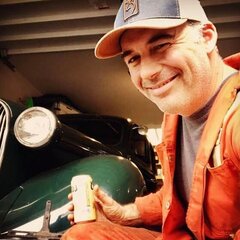
Kids are now officially married off...More me time?
keithb7 replied to keithb7's topic in Off Topic (OT)
For others, who like me, might be wonder WTH @Plymouthy Adams is talking about... "Sheldon tells Alex that “a woman is like an egg salad sandwich on a warm Texas day: full of eggs and only appealing for a short time". -
Up here in Canada I've had block heaters, oil pan heaters, and battery blankets all plugged in at once before. The snow as literally melting off the hood of the car when I came out in the morning. It was quite cold and car started up no problem! ? I've seen magnetic electric block heaters. Also diesel/gas fired heaters with circulation pumps built in. They can get a cooling system hot enough that the thermostat will open. A tip: Ensure your clutch is pushed in for a little more starter juice when the oil is cold. A tranny in neutral still spins the countershaft assy through the thick tranny oil. This adds a load to an already burdened starting motor,
-
I dug out my 1942 Dyke's manual to see if there was any mention of pulling thermostats in the summer. There were good instructions printed. Every spring and every fall the cooling system was to be flushed out to remove rust and scale. (white scale is a result of using hard water in the system) Alcohol, or sometimes another type of anti-freeze, was added in the winter. Alcohol would have been another expense I suppose, not needed in the summer. Cars often needed water topped off as it boiled and steamed off. I remember all the old service stations when I was a kid had air and water readily available. For free! There was no mention of removing thermostats in the summer months. I suppose many folks just did it because they didn't know any better. The spoken word is a very powerful communication method. The thermostat idea may have been just spoken word and passed along. If enough people did it, and talked about it, it must be the right thing to do? People did not have computers in their pocket to look things up. Still to this day, there are lots and lots of folks who can't tell you what a thermostat is. Open a modern car, some engines are encased in shields. The only serviceable piece is the twisty-cap-y-thingy that has the numbers "710" on it. In some ways the more things progress, the more things stay the same.
-
What was the thought process back in the day about removing thermostats in the summer? I heard somewhere, that for some old Mopar owners this is what they did each spring. I assume the thought was the engine ran cooler? That's not the case though, correct? With the thermostat out, it actually takes the engine longer to warm up to operating temperature where it is most efficient. Wouldn't running about with a cold engine, for a longer period of time, mean you're wasting more fuel? Contaminating and diluting the crankcase oil sooner? I went into the rad and water pump of my '38 today. I found no thermostat.
-

New Member: Just bought a 1936 Plymouth 2 Door Sedan
keithb7 replied to Tierod's topic in P15-D24 Forum
A 230 in this car must be a nice torque gain! I have a friend donating a 251. I think its going into my '38. Mine already has the 25" 226. The 251 should be a fairly straight forward swap. -

New Member: Just bought a 1936 Plymouth 2 Door Sedan
keithb7 replied to Tierod's topic in P15-D24 Forum
Nice car! I believe that one will have the 201 engine. Smoke on deceleration could be attributed to valve guide wear. You let your foot off the gas, the throttle valve closes. The engine is still trying to suck in air from anywhere it can. In these conditions, worn valve guides or valve stems will allow air from the crank case to be drawn into the cylinder. With it comes oil. This oil burns and shoots out the pipe predominantly at deceleration. -
Its not a bad job for the old Mopars I have worked on and done this. If you are able and willing, a few tools, and some patience it's not a difficult job. I suggest you start your own thread ans ask lots of questions. Don't be worried about sounding stupid. We all had to learn and knew little to nothing at one point too. There are many great members here willing to help. I am not aware of any bully-type intimidating responses there for asking simple questions. If you cannot get the pan cleaned up properly, take it to a machine shop and pay to have them set it in their hot tank for a while. They'll get all the sludge out that you may not even be able to see. Do not let anyone media-blast in in any way.
-

Kids are now officially married off...More me time?
keithb7 replied to keithb7's topic in Off Topic (OT)
Thanks for the intel guys...I have a better idea of my years ahead. Lol. As long as I have a garage, tools and an able body, I have accepted the fact that I will be the family mechanic. I will try with earnest to educate my sons throughout the process. Next job: 2 new CV drive shafts in my son's Ford Focus. Not too bad. Besides, he's back from the honeymoon. The Honeyoon is now officially over. He will turn the wrenches and pack the grease under his finger nails while drink beer, supervise, and offer advice. The kids have a friend with a drone. He took some footage of their wedding. Here you can spot my vintage Mopars in the driveway...We are so very fortunate. -
Just to add some colour to the topic of gear changes: When we change gear ratios and leave engine HP and torque as they are, we may get higher top end speed, but it may take you longer to get there. On steep hill climbs you may be forced to run your engine at too low of rpm to make maximum torque. On a hill you may be passed by the ghost of your earlier car, with its stock gears. Various gear ratios were chosen to offer performance based on the the weight of the car, its ability to overcome wind resistance, rolling resistance, top speed, average payload load capacity (coupe can't carry 5 people, yet a sedan often does and both cars often share the same engine) acceleration, horsepower, torque and probably more things that I'm overlooking. You've only go so much to work with. Changing gear ratios might be like robbing Peter to pay Paul in overall performance. Unless, you take the car away from stock and start modifying various factors that effect performance. No nitrogen in your tires is not a factor. LOL. I like to compare gear ratios to riding a bicycle. 21 speeds and more are easily available on a bike today. Your heart and thighs are the engine to get you up a hill. Try pedalling up a steep hill in a gear you'd likely use when traveling on flat terrain. How does your heart and legs feel? The look on your face tells me it's a struggle. That's how your car engine is working too. Tune up your body, get fit, you can do it easier. I see young conditioned cyclists climb hills easily. Sort of like adding dual carbs, shaving the cylinder head, lightening the flywheel, advancing timing on your engine. You could probably change out from 4.11 to 3.73 diff gears and fly up that hill with the new HP and torque. Probably stating the obvious here...It stimulates my brain.
-
I hooked up a 6V pump hastily for testing and troubleshooting purposes. It works just dandy mounted in a not-so-great position. Mounted in the rear engine bay, attached to the firewall , about where the firewall contacts the car frame. Mounted down low, but not as low as the fuel tank. Nor near the fuel tank. My 6V pump is placed after the stock type mechanical fuel pump. It is controlled by a toggle switch on my dash. I flip it on when when I want it on. It easily pulls fuel from the tank, sucks it through the mechanical fuel pump and pushes it up to the carb bowl. How do I know this? I tested fuel line pressure near the bowl, with pump switched on, engine not running. I am not running any type of fuel pressure regulator either. The pump makes about 3.5 PSI. So I did not bother to install a pressure regulator. My fuel system is currently set up, described as below. Surely not what is ideal, but it works great as it is: Fuel tank--steel lines along car frame---flex hose to mechanical fuel pump mounted to engine-- steel line up from mechanical pump----Rubber hose to electric fuel pump---rubber hose to fuel filter---Rubber hose to steel line--steel line to carb bowl fitting. My plan is to remove the extra rubber lines currently in use. Use steel lines wherever I can. I plan to move the fuel pump to the rear of the car down near the tank. I will continue to use the stock mechanical fuel pump. 6V electric pump for back up, and priming the system after its been left sitting for long periods of time. I'll get to the work this coming winter. For now I am just driving and enjoying the car over the cruising season. My system is damned, but works just fine. On a related note the vast majority of my engine starting problems disappeared when I switched to non-ethanol fuel. The temporary 6V pump helped me confirm that. Today, that 6V pump is barely getting any use.
-

Kids are now officially married off...More me time?
keithb7 replied to keithb7's topic in Off Topic (OT)
My lovely wife who supports me and my garage hobby...At least in part, so I can support our kids. Lol. -
Well 2 weddings in 2020 are behind us. Both of our sons were married this year. They are well on their way. So In theory I should have more me time... Earlier in July I was going to pull the rad in my ‘38 to be rebuilt. I was reminded that the kids wanted my ‘38 in their wedding photos. So I put-off the job. This week the kids were to take off for their honeymoon. Headed to Tofino BC. I jumped in my son’s 2000 Ford Focus the day before departure. I winced at it. Running rough! I told him to take Mom’s car for the honeymoon. I’d work on his Focus in his absence. So this week I’m using an OBD2 reader. Replacing and cleaning worn parts. Also a rear brake job including new wheel cylinders. Having some old car experience, and proper tools sure makes this work a little more pleasant. Next task, other son suffered a mechanical breakdown out on his Seadoo last night. In a quick moving river! He had a good learning experience. Time to mentor him a little more on Seadoo maintenance. He will turn the wrenches and enjoys it. I will remind him we own a factory service manual. Perhaps he should start studying it. Lol. So my ‘38 sits for a while yet.
-
My '53 has some type of air blend slider on the heat controls. Labeled "Summer-------Winter". I believe in winter mode it directs the air coming through the cowl, through the cab heater core. In summer it directs air straight from the intake cowl to the cab, not through the heater core. I can't be 100% sure if it works or not. I just shut off the water valve at the rear right corner of my cylinder head. It blocks any hot coolant from going to the cab heater core. Then I do have 100% confidence I am not blowing superheated hot summer air into my cab, when I want whatever cooling the ambient air temp can provide.
-
My understanding is some hardware at final toque, the bolt gets little stretch. The bolt elongates and then locks into place. Once the bolts are removed, tension released, the bolts have served their purpose. It's a one shot thing. They won't stretch and retain tension ever again like the first time. I wonder if this is the case with cylinder head bolts? I suspect so.
-
I cringed last time I removed head bolts. They all came out fine! I had no visual rust, so overall they were pretty clean. After valve work just exactly as you are doing, I installed all new head bolts to be safe. I torqued them down, then drove car to get everything hot a few times, then re-torqued them again. The second re-torque I was pucker'd up as I gave them final stretch again. I could almost hear them wincing in pain. All turned out good though. That was 3 years ago. Been reliable and great ever since. Some little tricks I might use on stuck bolts....A few mild raps on the heads with a hammer might break up come corrosion. Heat, can move things too. May not be possible with the longer bolts that go down into the block. Could try propane torch (as its not too hot) on a stubborn bolt head for a while. Won't hurt to try if you get nervous with a breaker bar. It wouldn't be too hard to twist these bolts in half with a breaker bar.
-
That's not the easiest pic to ID the tranny, but I think it is indeed a 3 speed manual. Does yours kind of resemble this 1953 Plymouth 3 speed manual tranny seen below? P20 is 1950 Plymouth, correct? Likely a pretty easy swap. You should be able to locate a running engine for far less than the cost to rebuild. Depends on your long-term plans with the car I guess.
-
Did I win the guessing contest in your other post? ? Great work getting in there and rolling up your sleeves. This is a great visual as to what generally happens when routine valve sets are overlooked. If not too bad, I’ve had good success hand cutting both intake and stellite exhaust valve seats by hand. Then lapping in new valves. I pulled the intake manifold and tested valve seat seal-abilty using kerosene. It will not drip down past a good valve that has been reassembled with springs, and in the closed position. Resist the temptation to use a wire wheel on a drill to decarbon the top of the block. If you want to do that, insert clean new shop towels in each cylinder. Then use a BRASS wire wheel. When done carefully pull out the shop towels. Use a shop-vac and suck everything and anything up. Especially down around the tops of the pistons. You want to be sure there’s nothing left down there to score up a cylinder wall. Or get lodged between your top piston ring and groove. Wire wheels tend to kick off little pieces of wire as they rotate. They can get into every little place that they don’t belong. Causing much regret later.
-
This one makes me think of simpler, times. Everyone looks like they are really enjoying a rare convertible 1938 Plymouth. According to a book I have, 1900 convertibles were made for the 1938 production year. Couple a young dudes with a pair of sweet ladies out for a cruise/date. Maybe a picnic. Maybe a few nips of a flask?
-
Does this qualify as Floating Power? 3 mounts with a centre line diagonally thru the engine. Front to back.
-
Welcome to the group. Thanks for joining. The more the merrier!
-
It does look like a good cruiser. Nice work.
-
Vice grips, them take them down to your local brick & mortar auto parts store. They could be able to match them up easily.


.jpg.b5c853fd0deb4cd0614f1e4541fac90c.jpg)
.jpg.a975b3260d23562b2a0d459bd7924f2a.jpg)

